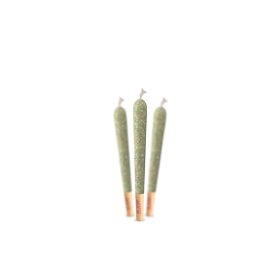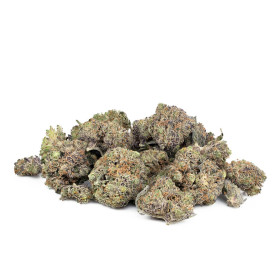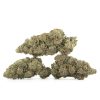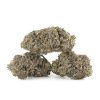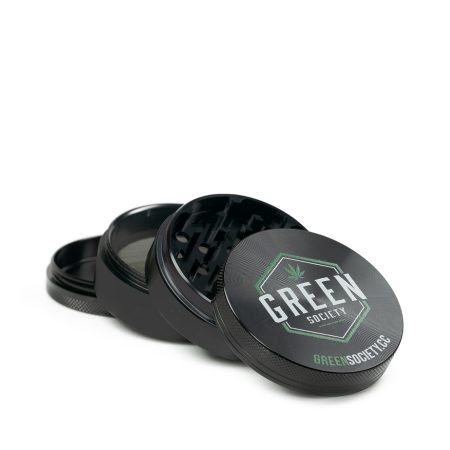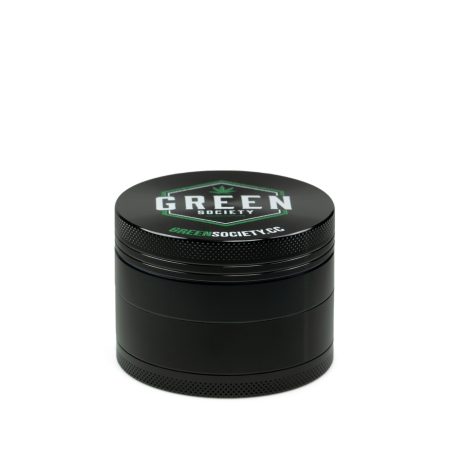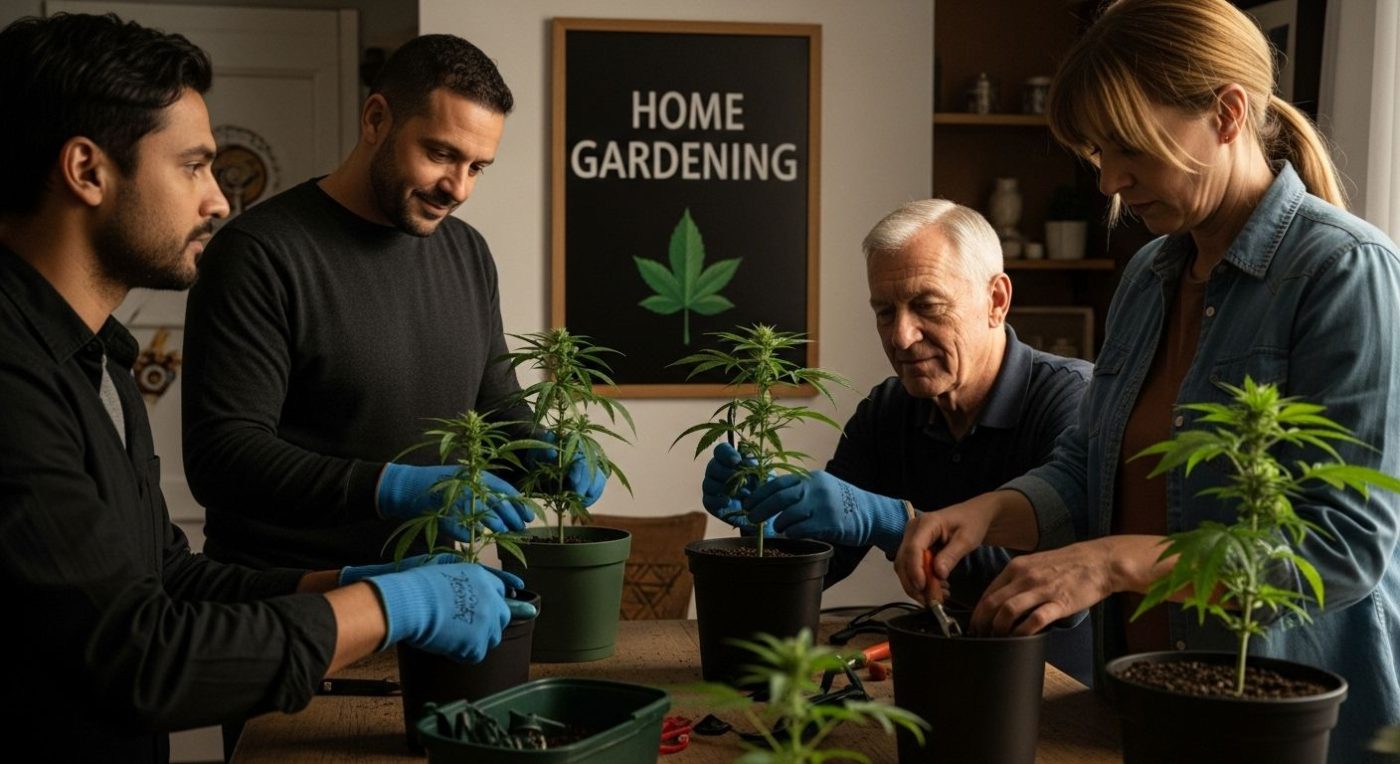Marijuana
DIY Home Gardening Tips for Cannabis Fans in Canada
Growing cannabis at home is gaining ground across Canada and more people are planting their first seeds than ever before. But only a small group of home cultivators actually end up with thriving harvests packed with quality buds. The wild part is that even beginners can boost their success by following a few smart steps and using basic tools, since over 70% of Canadians admit they don’t know the best practices for home cannabis care. That unlocks huge potential for those willing to learn a few simple tips.
Table of Contents
- Choosing The Right Cannabis Strains At Home
- Essential Tools And Supplies For Diy Cannabis Gardening
- Step-By-Step Guide To Growing Cannabis Indoors
- Maximizing Yields And Quality Safely At Home
Quick Summary
| Takeaway | Explanation |
|---|---|
| Choose the right cannabis strains | Selecting appropriate strains is vital for success in home cultivation, based on genetics and growth conditions. |
| Invest in essential gardening tools | Quality tools like pruners and soil testing kits enhance plant care and promote healthy growth. |
| Set up optimal indoor conditions | Control lighting, temperature, and humidity for effective cannabis cultivation and to prevent issues like mold. |
| Adapt nutrient management based on growth stages | Use suitable fertilizers tailored to plant needs at each growth phase to maximize yield and health. |
| Implement advanced cultivation techniques | Techniques like low-stress training improve light exposure and can significantly increase overall yields. |
Choosing the Right Cannabis Strains at Home
Growing cannabis at home requires careful consideration of strain selection, which directly impacts your cultivation success and final product quality. Understanding the genetic characteristics and growth requirements of different cannabis varieties is crucial for home gardeners looking to develop a thriving personal garden.
Understanding Cannabis Genetics and Varieties
Cannabis plants are complex organisms with distinct genetic profiles that determine their growth patterns, cannabinoid content, and overall performance. Research from the National Center of Biotechnology highlights the fundamental differences between Cannabis sativa and Cannabis indica varieties, which play a critical role in home cultivation strategies.
Sativa strains typically feature tall, narrow-leafed plants that grow well in warmer climates and have longer flowering periods. These plants often produce more cerebral, energizing effects and are better suited for outdoor growing environments with extended warm seasons. Indica strains, conversely, are shorter, bushier plants with broader leaves, ideal for indoor spaces and regions with shorter growing seasons.
Here is a comparison table outlining the major differences between Cannabis sativa and Cannabis indica varieties to help home gardeners select the right strain for their growing environment and preferences:
| Variety | Growth Pattern | Climate Preference | Leaf Shape | Typical Height | Best Suited For | Effects Description |
|---|---|---|---|---|---|---|
| Sativa | Tall, lanky | Warm, extended season | Narrow-leafed | Tall | Outdoor cultivation | Cerebral, energizing |
| Indica | Short, bushy | Cooler/shorter season | Broad-leafed | Shorter | Indoor/small space growing | Calming, relaxing |
| Hybrid (Indica/Sativa) | Varies (mixed) | Variable | Mixed | Varies | Flexible (indoor or outdoor) | Mixed (depends on genetics) |
Selecting Strains Based on Growing Conditions
Successful home cannabis cultivation depends on matching strain characteristics with your specific growing environment. Utah State University’s Extension service recommends considering factors such as available space, light exposure, temperature control, and humidity levels when selecting cannabis strains.
Indoor growers might prefer compact indica or hybrid varieties that require less vertical space and can be more easily managed under artificial lighting. Outdoor cultivators should choose strains resilient to local climate conditions, considering factors like temperature fluctuations, precipitation, and potential pest challenges.
Considering Cannabinoid and Terpene Profiles
Beyond growth characteristics, home gardeners should evaluate the cannabinoid and terpene profiles of potential strains. Some cultivators prioritize high THC content for recreational purposes, while others might seek balanced CBD ratios for potential therapeutic applications. Terpene profiles contribute to the plant’s aroma, flavor, and potential effects, adding another layer of complexity to strain selection.
Beginner growers might start with robust, forgiving strains known for consistent performance and moderate growth requirements. Autoflowering varieties, which transition from vegetative to flowering stages automatically, can be particularly appealing for those new to cannabis cultivation, offering simpler management and shorter overall growth cycles.
While selecting the right strain requires research and careful consideration, home gardeners can find success by understanding their specific growing conditions, personal preferences, and the unique characteristics of different cannabis varieties. Learn more about our strain selection guide to refine your home cultivation strategy and maximize your gardening potential.
Essential Tools and Supplies for DIY Cannabis Gardening
Successful home cannabis cultivation requires a strategic approach to equipment and supplies. Home gardeners need to invest in high-quality tools and materials that support healthy plant growth and optimize cultivation outcomes. Understanding the essential equipment can transform your cannabis gardening experience from amateur to professional.
Basic Gardening Tools and Equipment
The University of California’s Marin Master Gardeners recommend a comprehensive set of tools crucial for cannabis cultivation. Hand pruners are essential for precise trimming and maintaining plant shape, while gardening gloves protect your hands during cultivation. A quality trowel helps with soil management and transplanting, and hand rakes assist in breaking up soil and removing debris.
Additional critical tools include pruning saws for larger branch management, gardening knives for detailed work, and a sturdy wheelbarrow or garden cart for transporting soil, nutrients, and equipment. Invest in tools made from durable materials that can withstand repeated use and provide precise control during various cultivation stages.
Lighting and Environmental Control Systems
The Colorado Department of Revenue emphasizes the critical importance of proper lighting and ventilation in home cannabis cultivation. High-intensity discharge (HID) lights, such as high-pressure sodium (HPS) or metal halide (MH) bulbs, provide optimal spectrum and intensity for plant growth. LED grow lights are also becoming increasingly popular due to their energy efficiency and lower heat output.
Ventilation systems are equally crucial. Proper air circulation prevents mold growth, regulates temperature, and ensures plants receive adequate carbon dioxide. Consider installing exhaust fans, intake fans, and humidity controllers to create a stable growing environment. Portable thermometers and hygrometers help monitor temperature and humidity levels, allowing precise environmental management.
Soil, Nutrients, and Growing Medium Supplies
Americans for Safe Access recommend starting with a soil-based system for its simplicity and natural nutrient content. High-quality organic potting soil specifically formulated for cannabis provides an excellent foundation for plant growth. Look for soil mixes with balanced pH levels and good drainage properties.
Nutrient management is critical for healthy cannabis plants. Invest in comprehensive nutrient packages that include nitrogen, phosphorus, and potassium supplements tailored to different growth stages. Organic fertilizers, compost, and liquid nutrient solutions can help optimize plant health and yield. Consider purchasing pH testing kits to monitor and adjust soil acidity, ensuring optimal nutrient absorption.
Specialized growing supplies like fabric pots, trellises, and humidity domes can further enhance your cultivation setup. These tools support plant structure, improve air circulation, and create microenvironments that promote robust growth. Learn more about advanced cultivation techniques to refine your home gardening strategy and maximize your cannabis growing potential.
Remember that investing in quality tools and supplies is not just about equipment but creating an environment where cannabis plants can thrive. Careful selection and maintenance of your gardening arsenal will significantly impact your cultivation success.
Step-by-Step Guide to Growing Cannabis Indoors
Indoor cannabis cultivation offers home gardeners precise control over growing conditions, allowing for year-round production and consistent plant development. Understanding the fundamental steps and techniques is crucial for successfully nurturing cannabis plants in an indoor environment.
Preparing Your Indoor Growing Space
The Colorado Department of Revenue emphasizes the importance of creating a dedicated, secure growing area with proper ventilation and environmental controls. Select a space that can be completely sealed, such as a spare room, closet, or dedicated grow tent. Ensure the area has electrical outlets, adequate height for plant growth, and the ability to control light exposure and temperature.
Install reflective materials like Mylar or white paint to maximize light distribution and optimize growing conditions. Create a clean, sanitized environment to minimize potential pest and mold risks. Consider installing a carbon filter to manage odors and maintain discretion during the cultivation process.
Setting Up Lighting and Environmental Controls
Americans for Safe Access recommends using high-intensity discharge (HID) lights or advanced LED grow lights to provide optimal light spectrum and intensity. Position lights at appropriate distances from plants, typically 12-24 inches depending on the light type and plant stage. Implement a consistent light cycle, providing 18 hours of light during the vegetative stage and switching to 12 hours of light and 12 hours of darkness to trigger flowering.
Maintain precise environmental controls by using digital thermometers and hygrometers to monitor temperature and humidity. Ideal temperatures range between 70-85°F during light periods and slightly cooler during dark periods. Use oscillating fans to ensure proper air circulation, preventing heat buildup and strengthening plant stems.
Cultivation and Maintenance Stages
Begin by selecting high-quality cannabis seeds or clones from reputable sources. Start with germination by placing seeds in a moist, warm environment, typically using methods like paper towel germination or direct soil planting. Once seedlings emerge, transplant them into appropriately sized containers with well-draining, nutrient-rich soil.
During the vegetative stage, focus on providing consistent nutrients, maintaining proper pH levels, and monitoring plant growth. Employ techniques like low-stress training or topping to control plant shape and maximize canopy development. As plants transition to the flowering stage, adjust nutrient ratios and light cycles to support bud production.
Regularly inspect plants for signs of pest infestation, nutrient deficiencies, or potential disease. Prune excess foliage, remove any male plants if growing from regular seeds, and maintain a clean growing environment. Carefully track plant development, taking notes on growth patterns, nutrient responses, and overall plant health.
To simplify your preparation, here’s a summary table of essential indoor cannabis growing stages, their main focus, and critical actions at each step:
| Growing Stage | Main Focus | Key Actions |
|---|---|---|
| Germination | Seed sprouting | Moisten seeds, keep warm |
| Seedling | Early plant development | Transplant, provide light/soil |
| Vegetative | Leaf and stem growth | Apply nutrients, train plants |
| Pre-flowering | Transition to flowering | Adjust light cycle, monitor growth |
| Flowering | Bud development | Change nutrients, reduce humidity |
| Harvest | Collect mature buds | Inspect trichomes, trim plants |
| Curing | Enhance flavour/potency | Dry and cure buds in jars |
Successful indoor cannabis cultivation requires patience, attention to detail, and a willingness to learn and adapt. Explore our comprehensive cultivation resources to refine your indoor growing techniques and maximize your home cultivation potential. Each growing cycle presents an opportunity to improve your skills and develop a deeper understanding of this intricate botanical process.
Maximizing Yields and Quality Safely at Home
Home cannabis cultivation requires a strategic approach to maximize plant yields and ensure product quality. Understanding advanced techniques and implementing precise cultivation practices can transform an amateur growing experience into a professional-level operation.
Environmental Optimization Strategies
Health Canada emphasizes the critical importance of maintaining controlled growing environments for optimal cannabis production. Precise environmental management involves carefully regulating temperature, humidity, and air circulation to support robust plant development.
Consistent temperature maintenance between 70-85°F during active growth periods helps plants metabolize nutrients efficiently. Use digital thermostats and humidity controllers to create stable microclimates. Oscillating fans can prevent heat pockets and strengthen plant stems through gentle air movement. Implement hygrometers to monitor relative humidity, keeping levels around 50-70% during vegetative stages and reducing to 40-50% during flowering to prevent mold development.
Nutrient Management and Plant Nutrition
The Frontiers in Plant Science journal recommends a comprehensive approach to plant nutrition that goes beyond basic fertilization. Develop a sophisticated nutrient schedule that adapts to different growth stages, providing balanced macronutrients and micronutrients.
During vegetative growth, prioritize nitrogen-rich formulations that support leaf and stem development. As plants transition to flowering stages, gradually shift towards phosphorus and potassium-dominant nutrients that encourage robust bud formation. Implement progressive feeding techniques like slow-release organic fertilizers and carefully calibrated liquid nutrient solutions.
Advanced Cultivation Techniques
Advanced growers can significantly improve yields through strategic training methods. Techniques like low-stress training (LST) and topping allow cultivators to control plant shape, maximize canopy exposure, and potentially increase overall production. By carefully bending and securing branches, you can create a more horizontal growth pattern that allows more uniform light distribution.
Pruning plays a crucial role in plant health and yield optimization. Remove lower branches that receive minimal light, focusing the plant’s energy on top-producing cola sites. Implement defoliation techniques during appropriate growth stages to improve air circulation and light penetration.
Careful monitoring remains essential throughout the cultivation process. Document each growth cycle, tracking environmental conditions, nutrient responses, and plant development. This systematic approach allows continuous improvement and helps identify successful strategies for future grows.
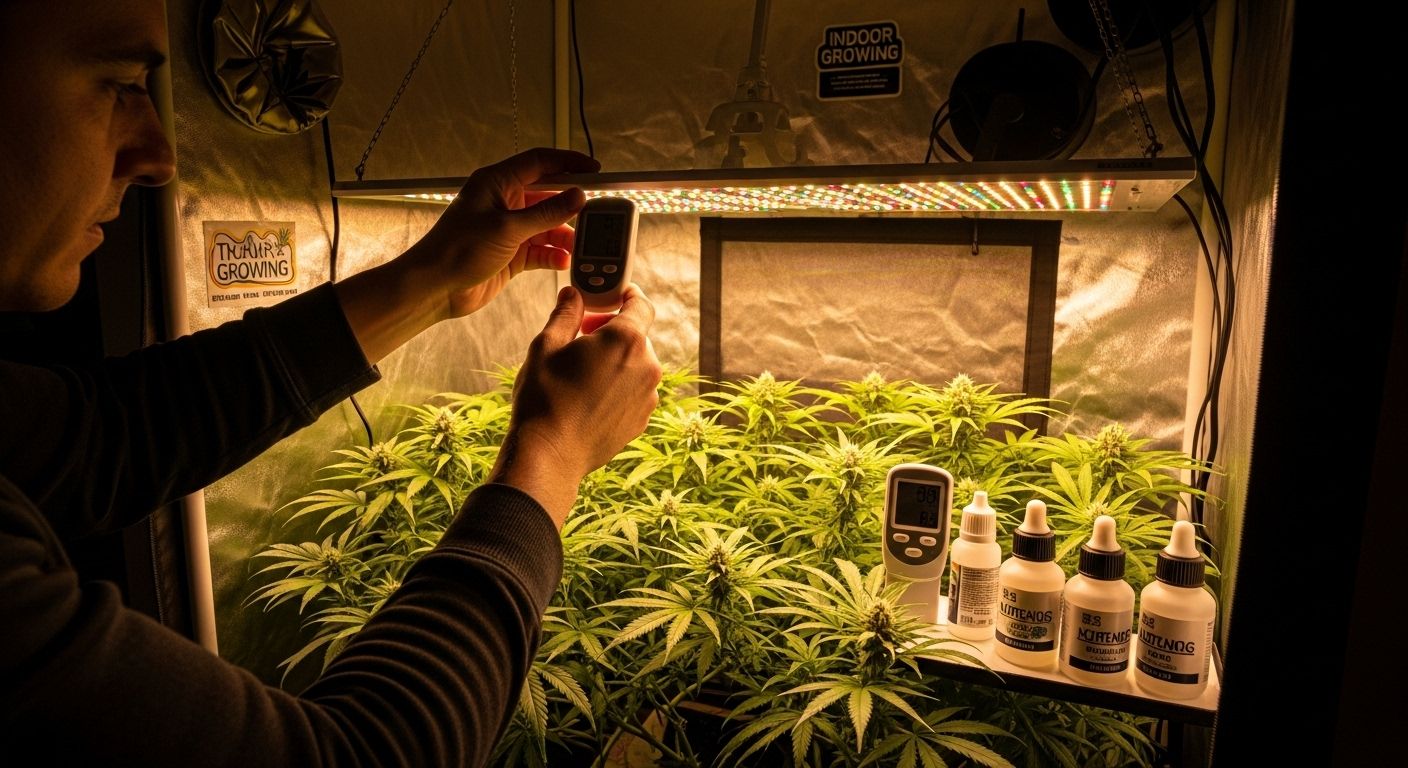
Remember that cannabis cultivation is both an art and a science. Patience, observation, and willingness to adapt are your most valuable tools. Learn more about advanced cultivation techniques to refine your home growing skills and maximize your cannabis production potential. Each growing cycle offers an opportunity to develop deeper understanding and expertise in this complex botanical practice.
Frequently Asked Questions
What are the best cannabis strains for beginners?
Choosing robust and forgiving strains is ideal for beginners. Autoflowering varieties are particularly appealing as they transition automatically from vegetative to flowering stages and require less management.
How important is lighting in indoor cannabis cultivation?
Lighting is crucial for healthy plant growth. High-intensity discharge (HID) lights or LED grow lights provide the optimal spectrum and intensity. It’s important to position the lights correctly and maintain consistent light cycles to support plant development.
What essential tools do I need for DIY cannabis gardening?
Basic gardening tools include hand pruners, a quality trowel, and gardening gloves. Environmental control equipment like fans, thermometers, and hygrometers, as well as soil, nutrients, and growing medium supplies, are also critical for successful cultivation.
How can I maximize my cannabis plant yields safely at home?
Maximizing yields involves optimizing environmental conditions, managing nutrients carefully, and using advanced cultivation techniques like low-stress training (LST) and pruning to encourage healthy growth and optimal light exposure.
Grow With Confidence and Elevate Your Cannabis Experience
Do you find yourself stuck between wanting to achieve lush, top-quality home harvests and not knowing where to get the right supplies, genetics, or reliable guidance? If figuring out which strains to start with, how to optimize yields, or choosing high-quality cannabis products to enjoy alongside your DIY crop feels overwhelming, you are not alone. As explored in this article, many Canadian home growers face challenges like selecting the best cannabis genetics, fine-tuning feeding routines, and sourcing trustworthy accessories.

At GreenSociety.cc, you can bridge the gap between learning and action. Visit our online dispensary to discover a wide range of premium cannabis products, perfect whether you need new genetics or are simply after high-quality flowers to complement your home-grown stash. We offer everything from flowers and concentrates to cannabis accessories, as well as detailed how-to guides and expert tips to help sharpen your growing skills. Take the next step and make your next home harvest your best yet. Shop today for swift and discreet delivery and meet your cannabis goals with resources and products built just for Canadian growers.
Recommended
- How To Order ~ Green Society
- How to Keep Cannabis Fresh: Proven Tips for 2025 ~ Green Society Blog
- How to Roll a Joint: Easy Steps for Canadians 2025 ~ Green Society Blog
- Edibles Dosage Calculator: Safe Cannabis Dosing 2025 ~ Green Society Blog

